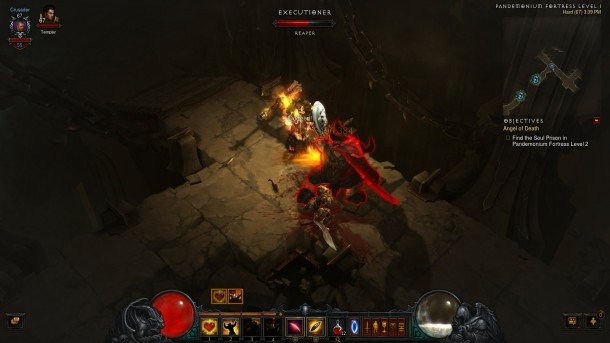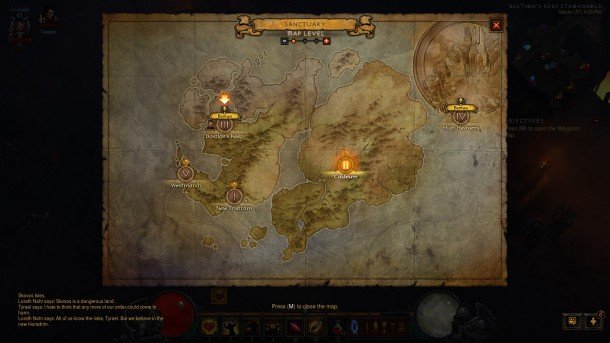Diablo 3: Reaper of Souls review in progress
Bible thumper
The Crusader class is a worthy addition. He's a likeable fellow that sounds a lot like Iain Glen in the role of Ser Jorah Mormont on HBO's Game of Thrones, and despite his (or her) fervor, he's not a caricature like the Templar. I've never really been one for Paladin-style classes, but the Crusader sold me. Here Blizzard gives us a badass that can wield two-handed weapons in one hand and a shield in another, and he shoots a fiery shield across the room as though he were the Vatican's take on Captain America. Press one key, and he summons a flaming steed that heals him, tramples enemies, or drags them behind him; press another, and he soars up and crashes down in a holy shockwave. I initially worried that some of his skills mirror the comparatively humble Barbarian's too closely: the “Akarat's Champion” ability, for instance, is essentially just a reskinned Wrath of the Berserker. But had I not played a Barbarian for countless hours in the months leading up to Reaper's release, I probably wouldn't have noticed. He's fun, to the point that the older classes sometimes feel like rough drafts.

And yes, to acknowledge the elephant in the room, the swappable skill system remains much the same. Sorry, Path of Exile fans. (And yes, Diablo III is still an always-online game.) But Blizzard focuses on letting us play the way we want to play in other ways besides skill trees, most notably in the form of the new the Adventure Mode and Nephalem Rifts, both of which shatter the grinding linearity of battling through the same levels in sequence ad infinitum.
Adventure Mode is almost rebellious in its freedom: it lets you access all five acts (even if you haven't played them) and battle through them with level-appropriate enemies at your leisure. Nephalem Rifts, which drop randomly in any mode, draw from the entire game's assets to push Reaper of Souls' emphasis on randomness to the extreme. In one of my favorite examples, I battled gigantic Withermoths from Act I within 10 levels of corridors from Bastion's Keep from Act III. In light of such dizzying variety, the campaign feels secondary and almost unnecessary. It's a smart design that encourages both extended solo and multiplayer play; whatever you want to do, there's a good chance you can do it.

Still other features enhance the experience. The new Transmogrification system, a World of Warcraft import, ensured that my Crusader always looked rightfully awesome by letting him adopt the look or preset models. A new Mystic NPC that lets you swap out a single stat on an item for a randomized new stat fills some of the void left by the auction house, but high resource costs and randomization seem to keep any exploitation in check. All of this combines to make Diablo III both an apology and a love letter, the game it should have been all along.
There may be more to come. Approaching the doors leading to Malthael, the Templar asks the Crusader, "What happens after Malthael is dead?" The Crusader, ever stoic, replies: "There will always be more evil to face. I expect to die fighting it."
If Blizzard keeps this up, I expect to be there with him.
Keep up to date with the most important stories and the best deals, as picked by the PC Gamer team.

